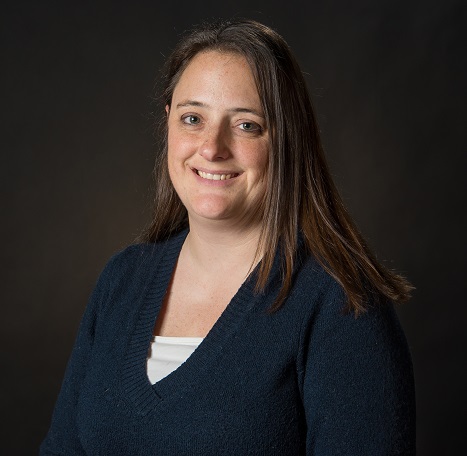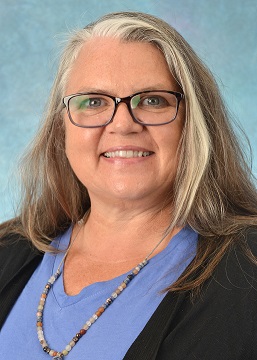Serving Students Where They Are: Laurie Ray and Kim Wynarczuk on School-Based Physical Therapy
Foundation Offers Grant in Support of School-Based Physical Therapy for First Time
Laurie Ray is an associate professor at UNC Chapel Hill and serves the state of North Carolina as the Consultant for Physical Therapy and Medicaid in the Department of Public Instruction. She is also the Coordinator for Practice of APTA’s Academy of Pediatric Physical Therapy. Kim Wynarczuk is an assistant professor at Moravian University in Bethlehem PA, going into her twelfth year of teaching. Prior to that, she was a school based physical therapist with the Bucks County Intermediate Unit for 11 years. She is also the Liaison to the Research Committee within the Academy of Pediatric Physical Therapy. Laurie and Kim sat down with the Foundation to discuss the nature of their work, who it benefits, the importance of research and the McEwen School-based Physical Therapy Research Grant, offered for the first time in 2023. This interview has been edited lightly for clarity.
For those of us who might not realize that a physical therapist work in schools: what is school-based physical therapy who does it benefit?

Kim Wynarczuk, assistant professor at Moravian University
Kimberly Wynarczuk: Our role in schools is to support the access, participation, and the ability to benefit from the educational program for students with disabilities. We’re not working with sports teams—we’re working with kids with physical disabilities, with a variety of different diagnoses, including Cerebral Palsy, Down Syndrome, Autism Spectrum Disorder, spinal cord injury, Spina Bifida, a developmental coordination disorder—those types of things.
We also provide a lot of services on behalf of the student: providing consultation and coordination with other members of the educational team, providing professional education and training to other people that the student interacts with, so they can help support the student in meeting their goals and benefiting from their education.
One faculty member I worked on a research project with summarized it as: It’s the only aspect of physical therapy that is federally mandated; physical therapists are in schools as part of the Individuals with Disabilities Education Act, or IDEA.
Laurie Ray: Kim that was a great explanation! After hearing my husband try to describe my work—fascinating every time—I finally got the description down to this:
The job of a school-based physical therapist is to ensure people working with students that have complex disabilities, know what to do, are comfortable to doing it, and have my support, and also to make sure that the student’s physical body doesn’t prevent them from learning, participating, playing…from doing all the things that other students do.
The Foundation’s grant cycle is open now, and the McEwen School-Based Physical Therapy Research Grant—supported through the Irene McEwen Fund for School-Based Physical Therapy Research—is available for the very first time. What types of research projects for school based physical therapy research are most needed?
Laurie Ray: We’re really excited about this! What I hope happens with this funding is that folks are moving within the educational system to figure out exactly what you asked: What is needed most, versus trying to get a research project to be school-flavored to get this funding.
The types of research projects we need are efficacy studies: What are the most efficient, effective interventions for school? Do we have appropriate assessment tools? There might be some new assessment tools that might come out of this; I think that would be fantastic.
The expertise we bring, the skilled license of the physical therapist is what gets the right piece of equipment that works within the environment to the team. We know anecdotally the value of the work; research establishes evidence to prove it.
Kimberly Wynarczuk: As a profession, we are so excited that this grant is finally available! It shows that there’s physical therapists who have school-based practice really at the heart of what they do. It’s a different approach, and so it’s exciting to see that Irene has seen the value and wants to carry forth that value in this fashion.
A research study was done years ago on services provided for students with Down Syndrome. They used a circle graph to represent how the students’ week was spent. The time that a physical therapist can spend with a child was this little sliver of time -remember of Pac-Man, from the 1980’s? The “mouth” piece is the time the PT spends with the child; the whole rest of the circle is all the time that they spend with family educators, other or other caregivers. How can we create an impact and support everyone in that small piece of time? I think research needs to look at that full piece as well.
There’s a lot of research coming out about participation-based approaches to intervention and strategies in in different educational environments. We might not be able to take away all of the students’ impairments, but how can we support their participation through everything that we do?

Laurie Ray, associate professor at UNC Chapel Hill
Laurie Ray: Another thing that I don’t think we touched on was student outcomes. The IDEA law is a results-oriented mandate. We have outcome measures that schools are required to get data around about work, further education, and independent living.
One of the other things that’s important is developing new researchers. We don’t have a pipeline the way hospitals do. It’s a wonderful practice setting with lots of meaningful work, but a natural connection to research is not there. I’m hoping that having some grant funding, maybe having funding for emerging researchers- that’s like seed money to get people like Kim into the research work in a in a meaningful way.
Is this work done in lots of schools, or is it only certain schools?
Laurie Ray: One concept of the IDEA legislation is the Least Restrictive Environment. That means students (with disabilities) should be served with typically-developing students in their home schools to the extent that their disability allows. So, it depends: is there’s a student with a disability that lives in that area, and can their needs can be met by the programs that are offered there?
Kimberly Wynarczuk: If there’s a student in a school who needs physical therapy services to and to benefit from their education then they need to receive that service. So, we’re everywhere.
Laurie Ray: Wherever the student is, that’s where we bring our services and where we work.
What is different about conducting school based physical therapy research vs conducting pediatric physical therapy research?
Kimberly Wynarczuk: It’s a very different approach. We have our medical minds and our medical knowledge that we bring to the table, but we’re working within an educational model, and the social justice model of disability as well. In school-based practice we do a lot of collaboration with the entire educational team, and everything needs to be very individualized.
We look and say: what are what are
needs? What are their goals? What support do they need to achieve those goals?
Laurie Ray: In typical pediatric research the parents are bringing their child to the research project. In school-based research the parents aren’t there. The reason children are at school is to learn. Removing them for a research study, that’s not what they’re there for. Schools have a very protective mindset when it comes to their students; they want to make sure that they’re not being denied what they need to learn to make progress.
You need to get parent approval, and you need to get the word out. There are privacy laws that govern educational records if there’s anything accessed from the educational record. Which there usually is.
How can school-based research improve outcomes for students?
Laurie: It’s important is to identify what is effective practice. Is collaboration effective, or what features of collaboration work best? Kim talked eloquently about the importance of shaping the school day. If I as a PT do an effective intervention for 45 minutes, that’s great. But if I can demonstrate to the teacher and the TA that working to make every part of the school routine help that child practice that skill instead of over helping them ourselves or doing for them, we can shape the environment in ways that set the student up for good practice, and therefore get them to have better outcomes. Making those connections with outcomes data is critical because it demonstrates the value of our work.
Kimberly Wynarczuk: There are differences across the country. And there’s been some research looking at that which makes doing more school-based research even more challenging. I think the other piece is: how can research impact outcomes, making sure that dissemination and knowledge translation is an intentional component of whatever research is done? A lot of us work relatively isolated, so we need to be intentional about that dissemination and knowledge translation.
What advice do you have for researchers who are maybe looking at moving into school based physical therapy research, or students who may be considering specializing in school based physical therapy?
Laurie Ray: My biggest piece of advice for researchers looking to move into school-based research is that traditional research mechanisms and designs will likely not work in public schools. To be successful, you’re going to need that input, earlier, much earlier in the research development. You need to bring in school-based practitioners at the development phase of your research design.
Kimberly Wynarczuk: School-based practice is not just bringing your outpatient medical clinic and putting it in a school. There’s no space. It doesn’t meet with the law, the philosophies, we follow as school based physical therapists.
Laurie Ray: I also just want to encourage researchers looking at school practice. I think that there’s a lot about school and the school setting that will afford meaningful, important research that can be put into practice right away. I think school-based research will also have to be much more collaborative in an integral and early way for it to be effective.
Kimberly Wynarczuk: Sometimes I summarize it as: I want to be at school with the students, seeing what they’re doing and supporting them, I want to make sure that they can get to recess, and get to the cafeteria, and if there’s a food fight in the cafeteria like you, better participate and get in trouble with all the other kids. it’s fun.
Laurie Ray: That’s an important point. It is really fun.
Interested in learning more about school-based grants? Visit our website to view information on the grant cycle, available grants, grant guidelines, and application instructions.
STAY CONNECTED
Use this form to sign up for the Foundation for Physical Therapy Research monthly newsletter.